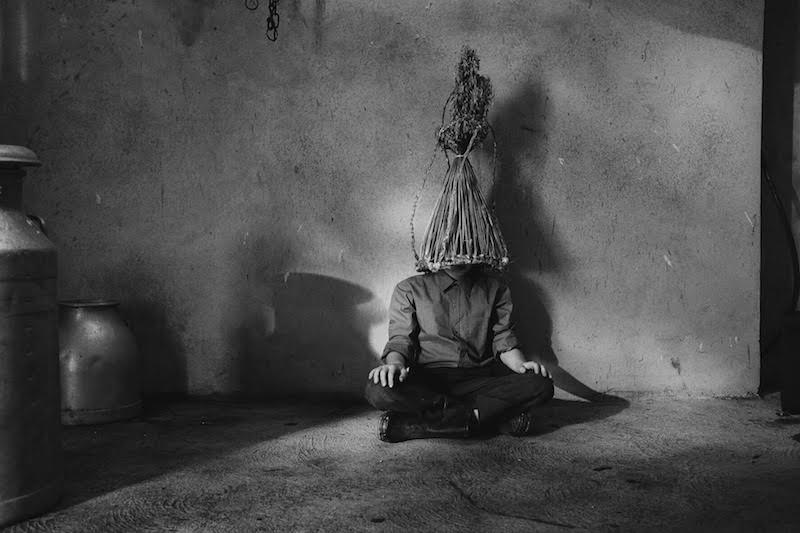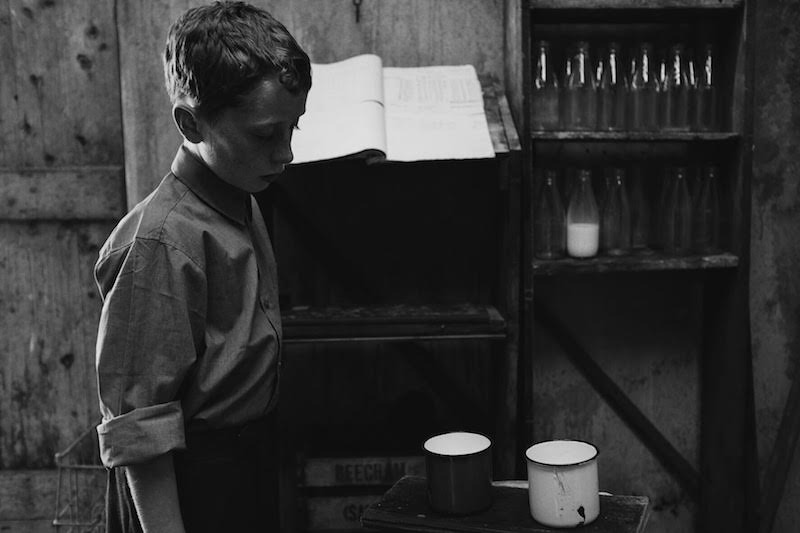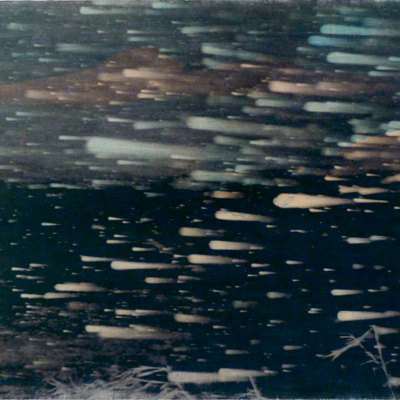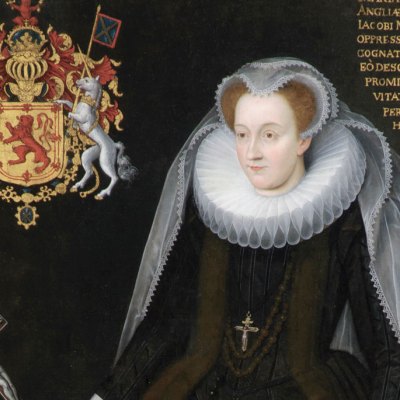Grainy footage of a small village in Kerry at the end of the 1960s shows an everyday scene outside a small creamery, a milk cart being pulled by a donkey. Inside, the creamery-owner is being interviewed. The interviewer asks what seems an innocuous question. The creamery-owner defends himself, disputing the interviewer’s source, advising him to be careful of the idle – or not so idle – gossip of the village: ‘once a story starts,’ he warns, ‘you will have difficulty stopping it.’
The Welfare of Tomás Ó Hallissy is Duncan Campbell’s first work since being awarded the Turner Prize in 2014 for his essay film It for Others. Campbell once again makes use of techniques he has spent several years honing, combining archive footage – in particular, extracts from a 1968 anthropological film, The Village – with newly produced material, performed by actors and filmed by Rina Yang on location in Kerry. The Welfare of Tomás Ó Hallissy (co-commissioned by Van Abbemuseum, Eindhoven, Western Front, Vancouver, and IMMA, Dublin – where it is currently on show), is a contemplation of meaning-making; a lyrical reflection upon the power of narratives, filmic and anthropological, to misconstrue.
The Village was produced by a team of researchers from UCLA’s Ethnographic Film Program, on site in the Irish-speaking village of Dunquin. It is typical of its time, documenting a ‘disappearing’ way of life. In Campbell’s treatment, however, this filmic record is fused with a number of other anthropological resources, especially Nancy Scheper-Hughes’s 1977 book, Saints, Scholars, and Schizophrenics, whose publication caused upset in the small Irish village on which it was based. Some of Scheper-Hughes’s ideas about mental illness in rural Ireland make their way into Campbell’s critique of the unreliability of the anthropologist-observer.
Film still from The Welfare of Tomás Ó Hallissy (2016) by Duncan Campbell. Photo: courtesy of Rina Yang

Campbell’s scripted additions to the archive posit a semi-fictional anthropological duo, Walter and Nancy. (This new footage is presented in black and white, as if continuous with the archival material. Nevertheless, the seams remain clear, the artifice foregrounded.) At one point, these two interlopers have a private recorded conversation about the ethical ramifications of their actions, a slightly unwieldy method of spelling out some of the work’s central concerns. Is what’s being filmed ‘the truth’? Can the documentary form record without distorting? Are the filmmakers here to ‘politely record a death-rattle,’ or are they inscribing their own narrative? Unfortunately this exchange feels stilted. The scene is laboured in a way that the rest of the work is not.
Elsewhere Campbell’s execution is much suppler, with a deftness of touch and a rhythmic momentum that allows the work’s preoccupations to emerge and resonate much more subtly. With its non-linear pattern, The Welfare of Tomás Ó Hallissy is shorter and less heavily plotted than, for instance, the feature-length It For Others. In the new work, Campbell’s investigation of his subject feels freer, the result richer and more suggestive. At moments, in fact, it feels literary. The parallels with Brian Friel – and the generations of privileged observers he so caustically satirised in Translations – are inescapable. But there are also echoes of John McGahern’s miraculously understated short stories, expressing the inarticulate frustration of life in rural Ireland. Like these writers, too, Campbell’s work is underpinned with a vein of savage humour.
In one scene, two men are standing in the village Post Office, collecting their pensions, painfully aware of the camera recording them; subtitles at this point become a source of a very contemporary kind of comedy, the younger man’s embarrassed silence juxtaposed with his bitter interior monologue: ‘Can’t you see they’re recording…Bitch…You’re as bad as the rest of them.’
This is just one of a patchwork of miscommunications; others have a more sinister dimension. Two men, seeing the filmmakers approach, conceal their guns in the grass and pose as if innocently enjoying the countryside. The new footage is full of such hidden, gestural communication. At moments the townspeople communicate in Irish – making themselves deliberately incomprehensible – but even in their legible exchanges, Campbell makes great use of the notorious indirectness of Hiberno-English, conveying very clearly the covert strategies of the villagers, the shrewd silence of the historically disenfranchised.
Film still from The Welfare of Tomás Ó Hallissy (2016) by Duncan Campbell. Photo: courtesy of Rina Yang

But the villagers are no match for the force of the anthropological gaze with which they are being scrutinised. As Nancy puts it, the anthropologist’s work is a form of ‘description as transcendence.’ As observers, that is, they can ‘transcend’ the facts. And The Welfare of Tomás Ó Hallissy is haunted by this knowledge: the inevitability of being misunderstood. Tomás himself – the ten-year-old of the title – appears in several scenes, a young boy tortured by self-consciousness, agonised by the presence of the camera. Unable or unwilling to speak, he is acutely aware of the camera’s power to misrepresent.
The work was commissioned as part of IMMA’s official ‘Ireland 2016’ centenary programme. In a climate of historical narrative-building – and in a country, what’s more, peculiarly aware of outside perceptions – Campbell seems commendably bent on misrepresentation. The work concludes with a scene on a laneway, at night, in the aftermath of a violent row. One man is being talked down from the conflict, led away; there are mutterings about land. The man turns and glowers at the camera, calling it ‘the evil eye’. This is the only moment that any real tension rises to the surface; his is the one genuine voice in the work, and it is indecipherable. We are given no indication of what the fight was about.
Duncan Campbell, The Welfare of Tomás Ó Hallissy is at the Irish Museum of Modern Art (IMMA) until 7 May 2017.



